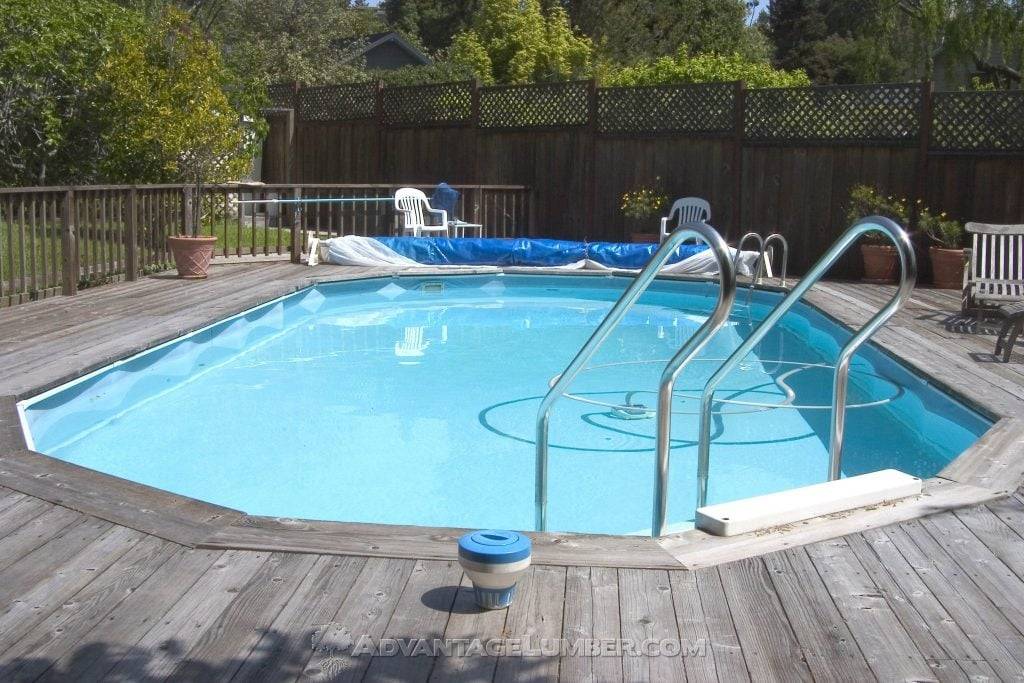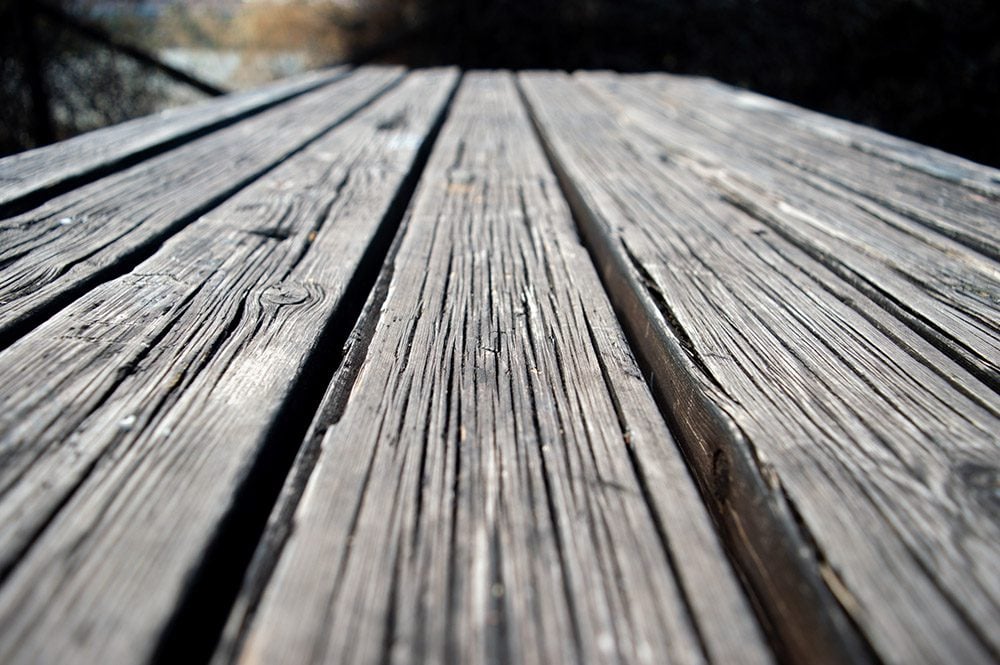Deck boards, especially those made of softwoods like pressure treated pine and cedar are exposed to a variety of environmental factors that can cause them to crack over time.
Note:
Many people confuse cracks in wood with surface checking.
What is surface checking?
Surface checking refers to the small, shallow cracks that appear on the surface of wood as a result of the drying process. These checks occur because the outer surface of the wood dries and shrinks faster than the inner part. As the exterior contracts and the interior remains relatively stable, the stress causes the surface to crack.
Softwoods like pressure treated pine can get larger surface checks that can eventually get worse over time.
Here’s why they crack and how you can mitigate the issue:
Reasons for Cracking:
- Moisture Fluctuations: Wood expands when it absorbs moisture and contracts when it dries out. This constant expansion and contraction can lead to cracking over time.
- UV Radiation: The sun’s ultraviolet (UV) rays can break down the cellular structure of the wood, making it more prone to cracking.
- Temperature Changes: Extreme temperature fluctuations can cause wood to expand and contract, leading to cracks.
- Natural Defects: Some woods have knots, grain variations, or other natural defects that can be weak points where cracks can start.
- Improper Installation: If deck boards are installed without proper spacing, ventilation under the deck or if they’re fastened too close to the edges, they might crack.
- Foot Traffic and Weight: Over time, the constant weight and movement of people and furniture can stress the wood, leading to cracks.
- Inadequate Sealing: If the wood isn’t properly sealed, it can absorb excess moisture, which can lead to cracking.

How to Prevent Cracking:
- Choose the Right Wood: Some woods are more resistant to cracking than others. Hardwoods like Ipe, Cumaru, Tigerwood or Teak, for example, are more durable and less prone to cracking than softer woods. Pressure-treated lumber is also a good option as it’s treated to resist rot, decay, and insect damage.
- Proper Installation: Ensure that deck boards are installed with the appropriate spacing to allow for expansion and contraction. Also, avoid fastening screws too close to the edges.
- Seal and Stain: Apply a high-quality deck sealer or stain to protect the wood from moisture and UV radiation. This should be reapplied every couple of years or as needed.
- Regular Maintenance: Clean your deck regularly to remove dirt, debris, and mold. This not only keeps the deck looking good but also prevents moisture and mold from weakening the wood.
- Shade Solutions: If possible, consider installing a pergola, awning, or another shading solution to protect your deck from constant sun exposure.
- Avoid Excessive Weight: Be mindful of the weight and type of furniture you place on your deck. Distributing weight evenly and using furniture pads can help reduce stress on the wood.
- Inspect Regularly: Periodically check your deck for signs of wear, cracking, or other issues. Addressing small problems early can prevent them from becoming bigger issues later on.
- Use Composite Decking: If you’re building a new deck or replacing old boards, consider using composite decking materials. These are made from a mix of wood fibers and plastic, and they’re designed to look like wood but are more resistant to cracking, fading, and other common wood problems.
Remember, while you can take steps to minimize cracking, no outdoor deck will be entirely maintenance-free. Regular care and attention will help ensure your deck remains in good condition for years to come.

Do I need to fill in cracks in my deck posts before I stain
No but you should make sure they are structurally sound and not rotting. If the posts are pressure treated using a brush and applying stain in the cracks can help prevent water from pooling in the cracks which could lead to early rot and decay.